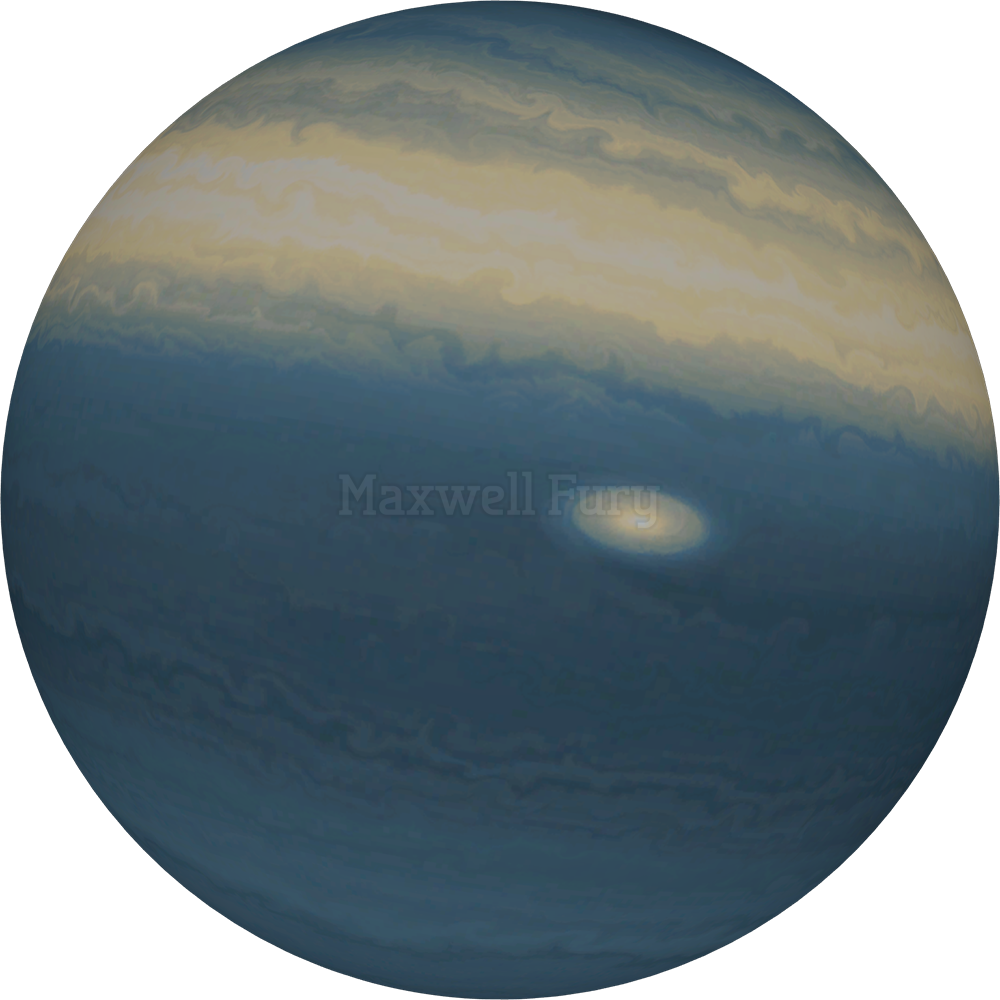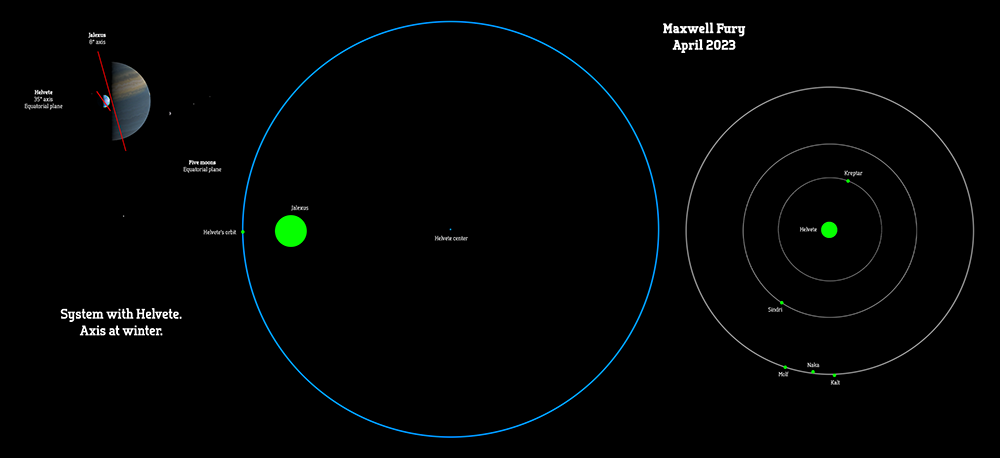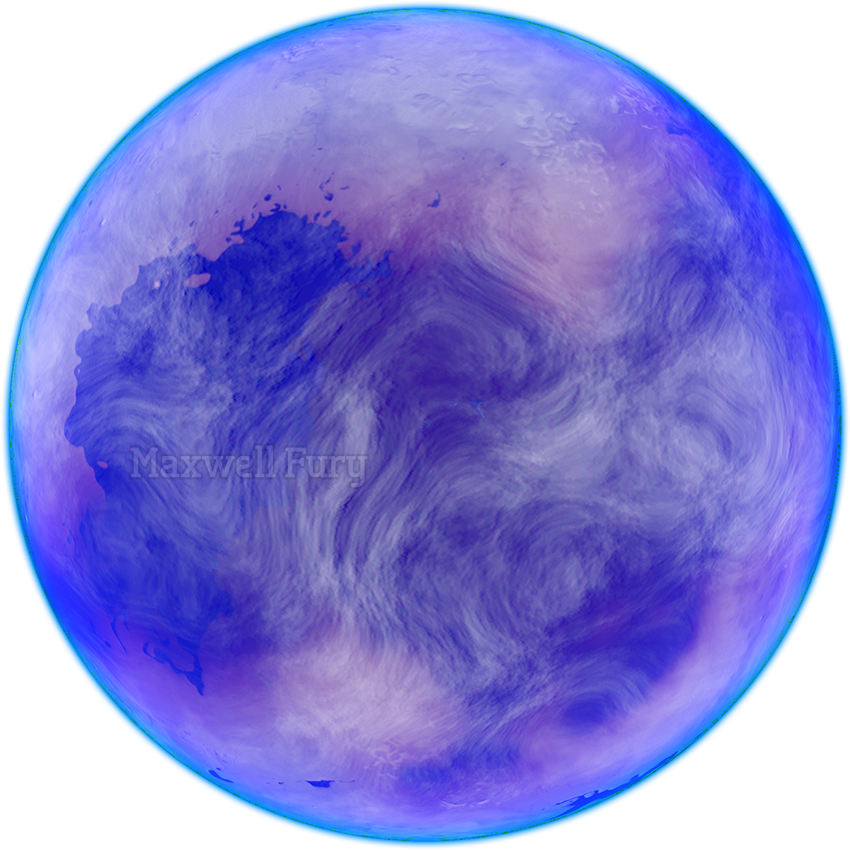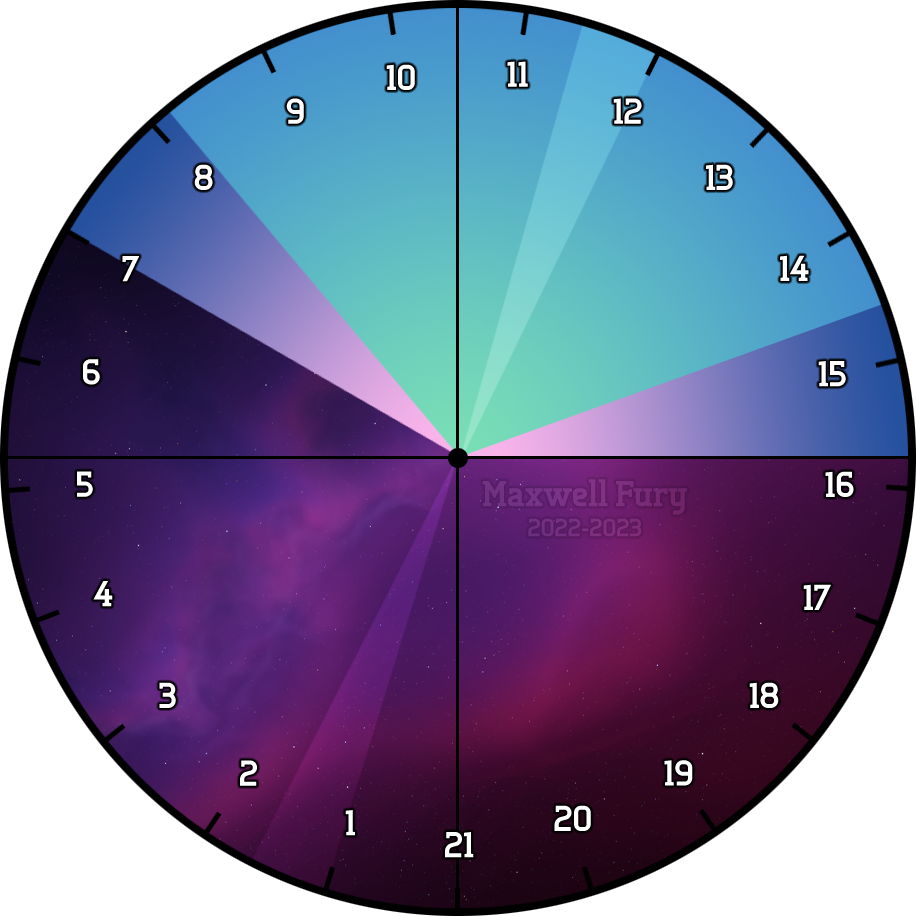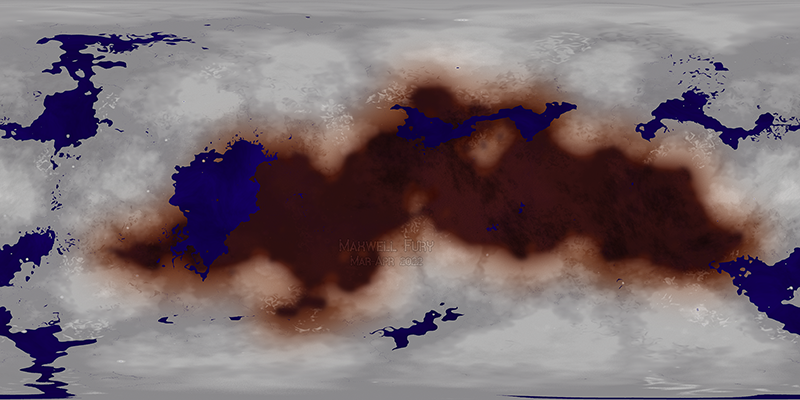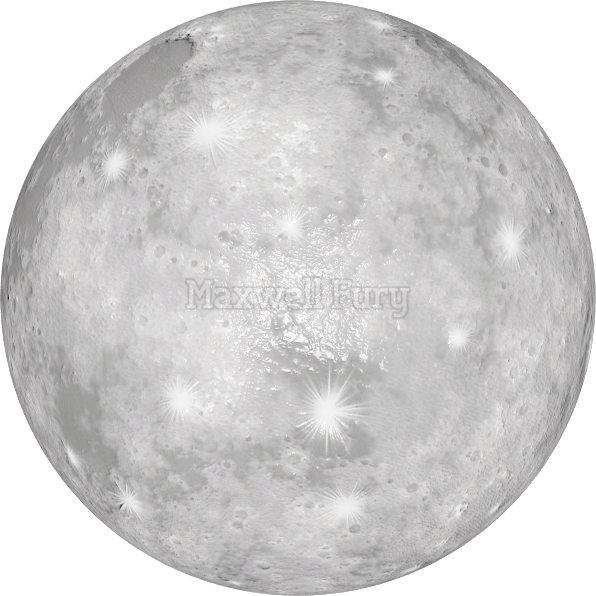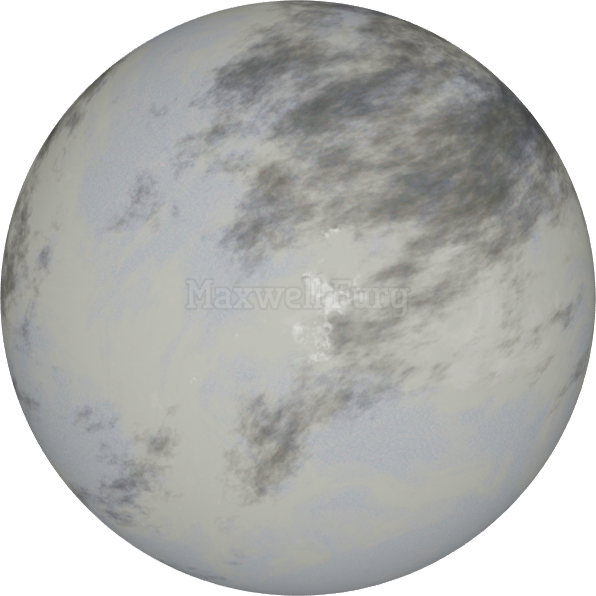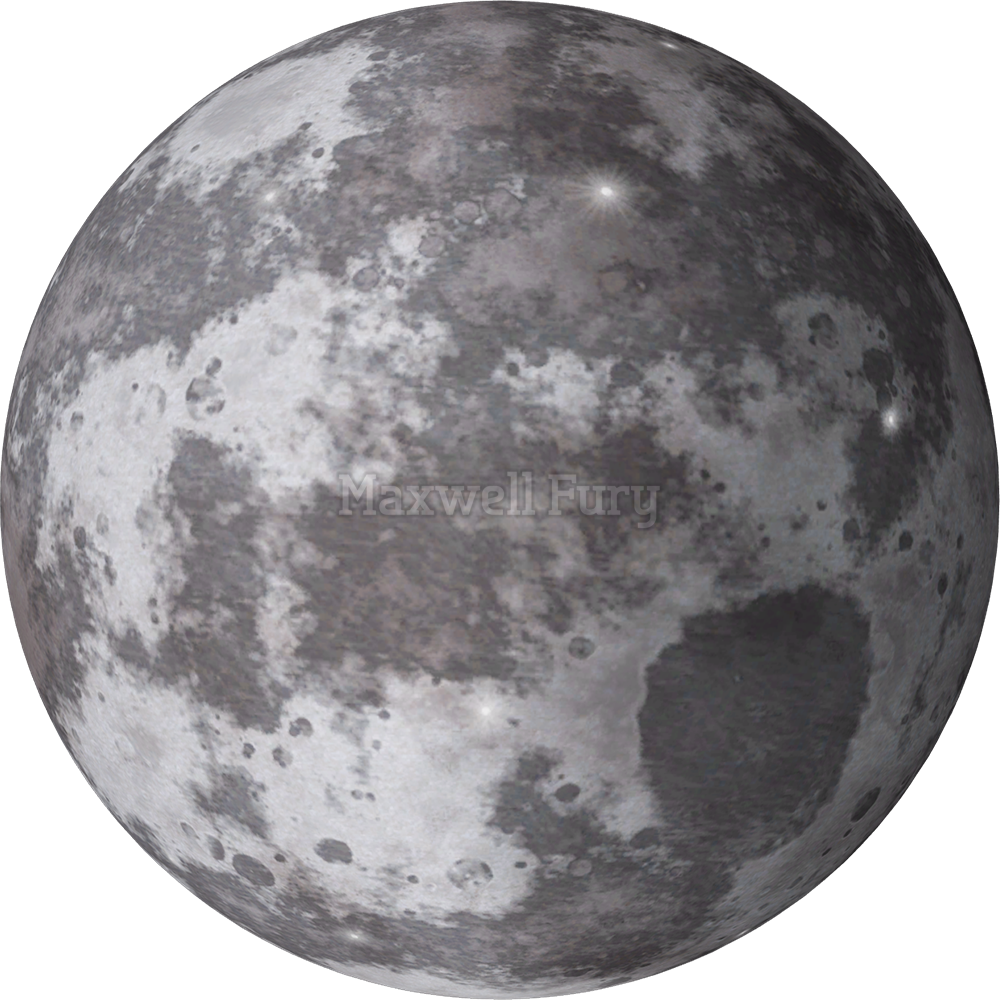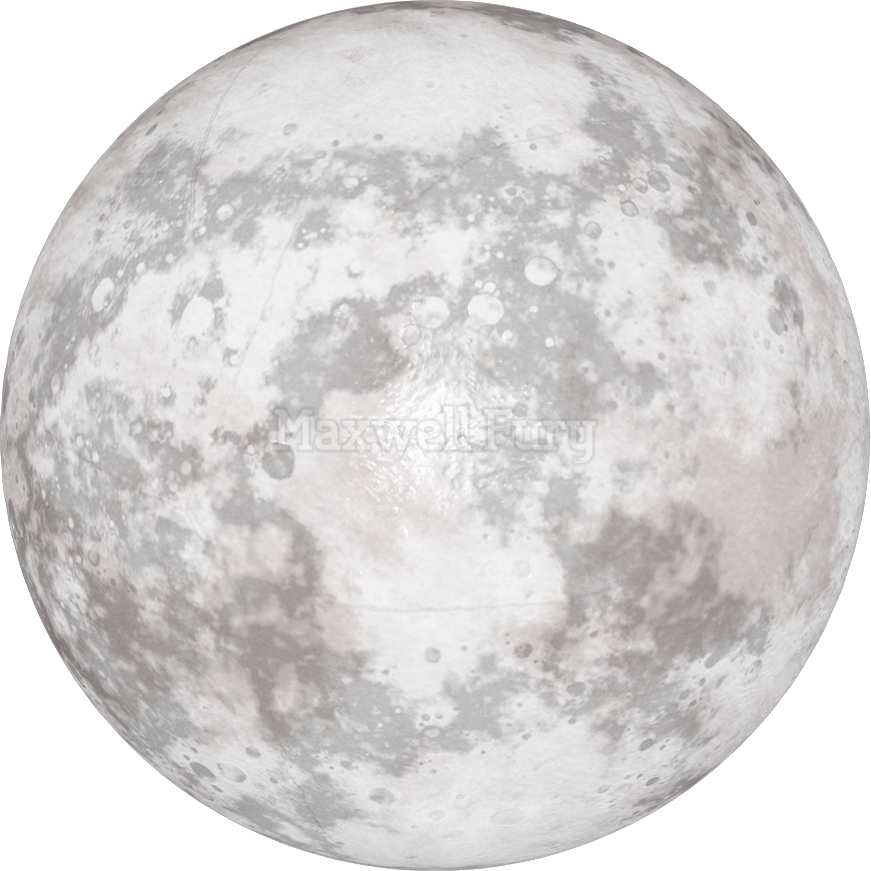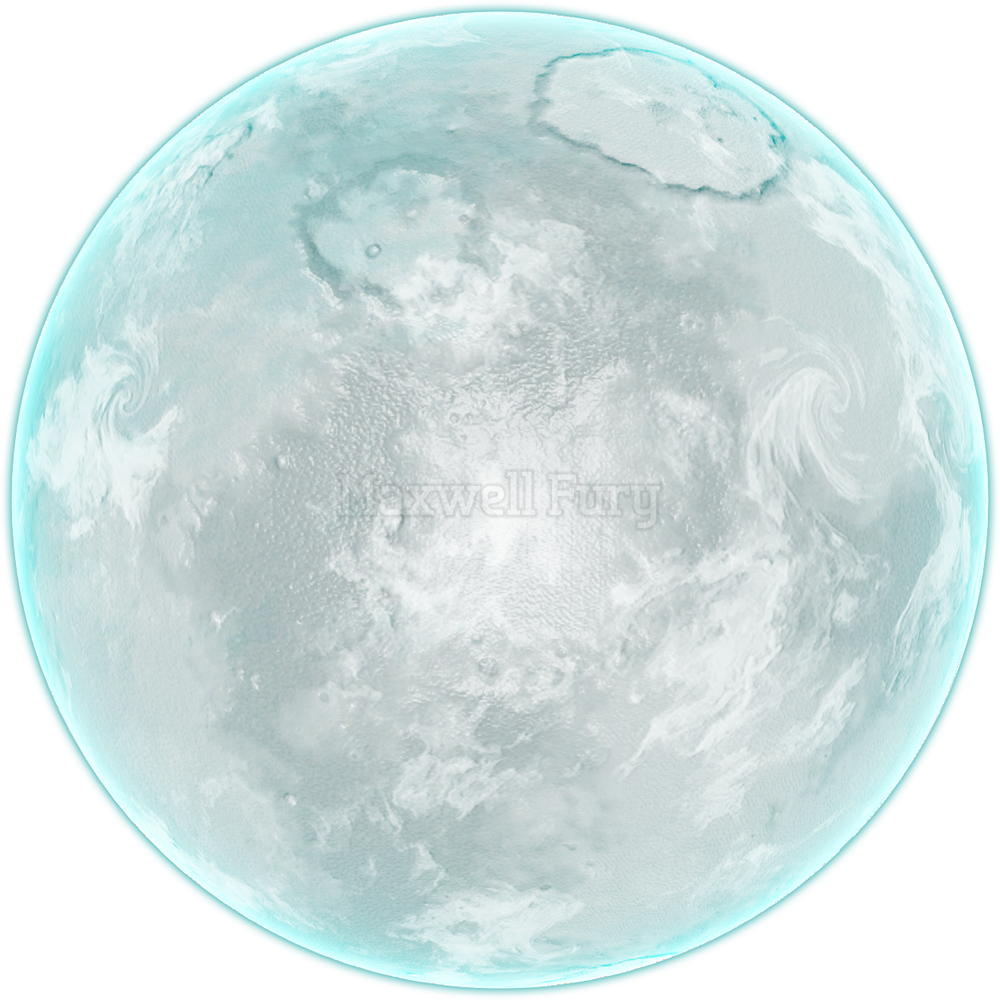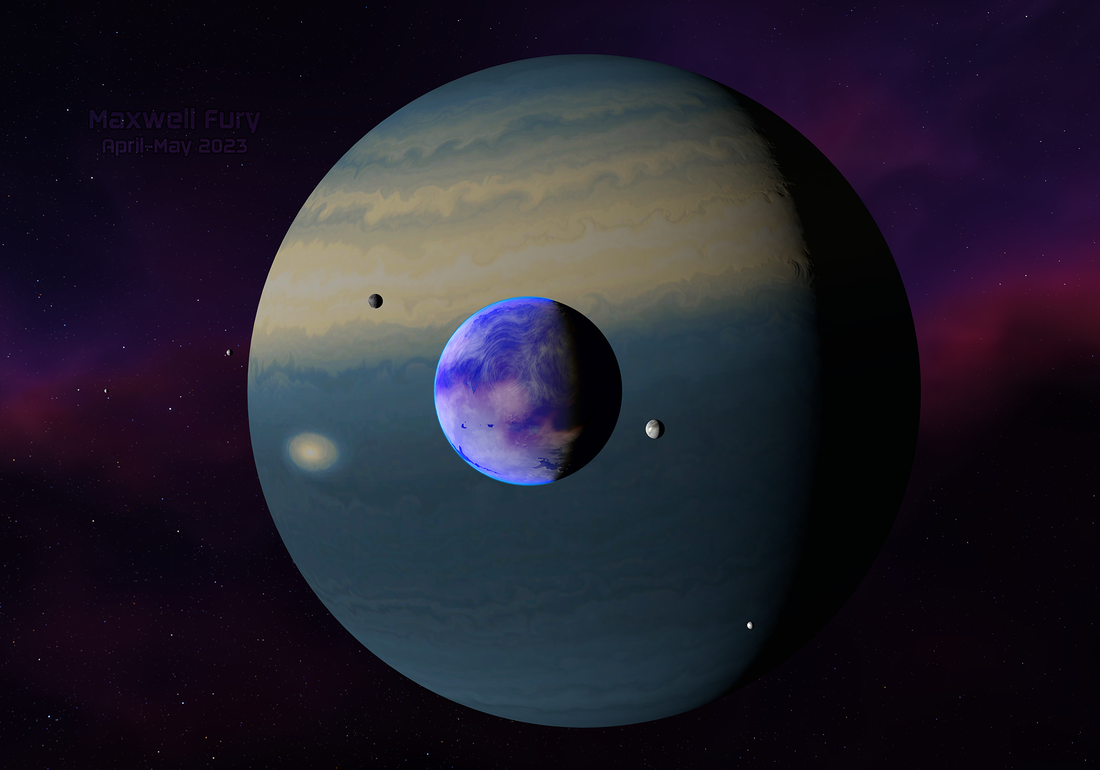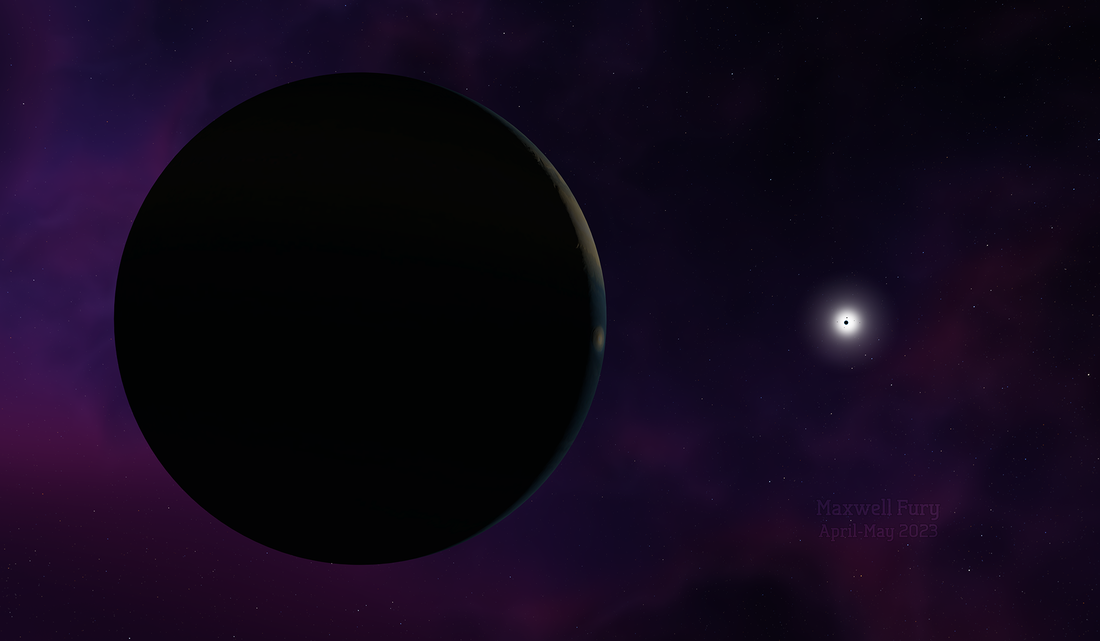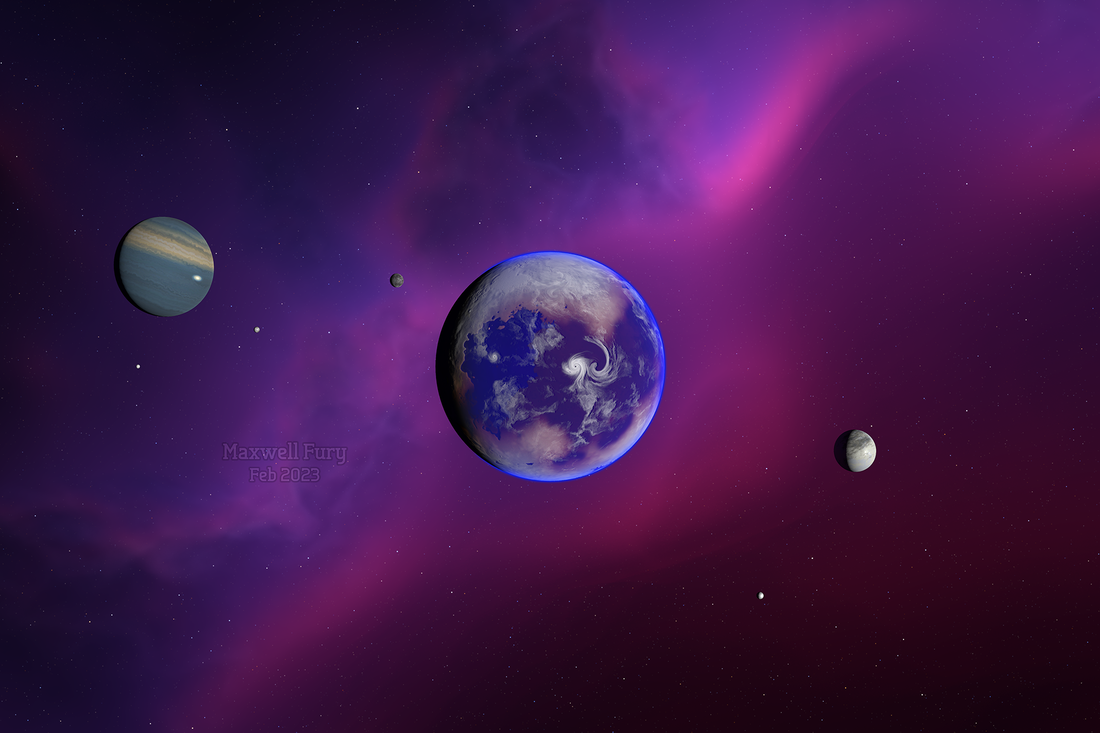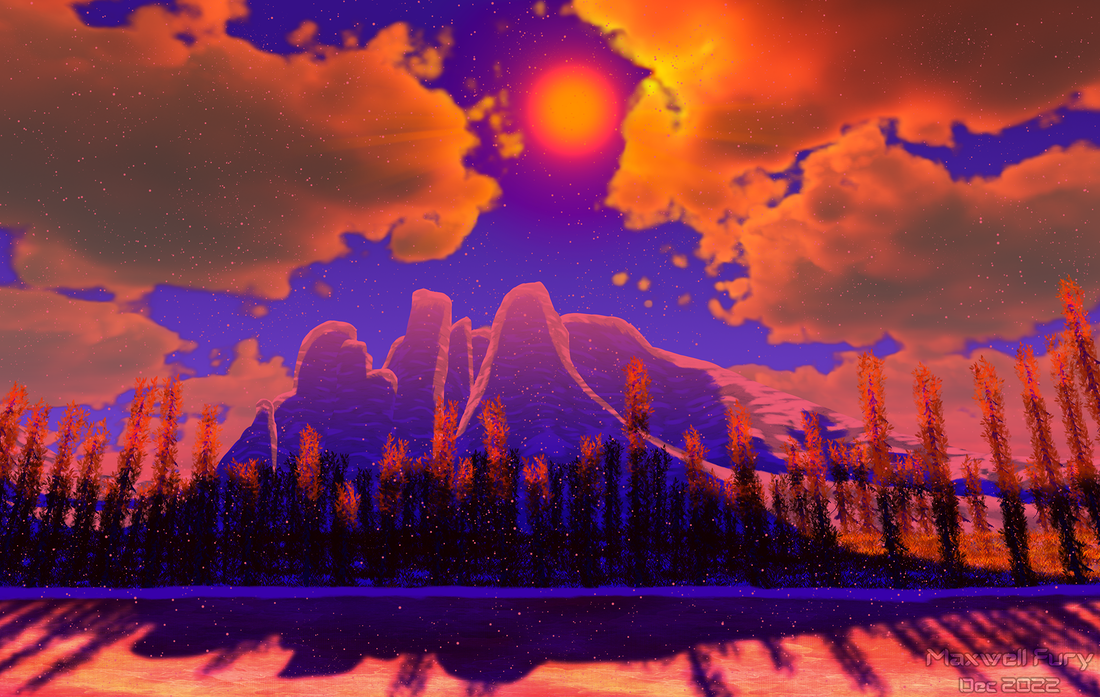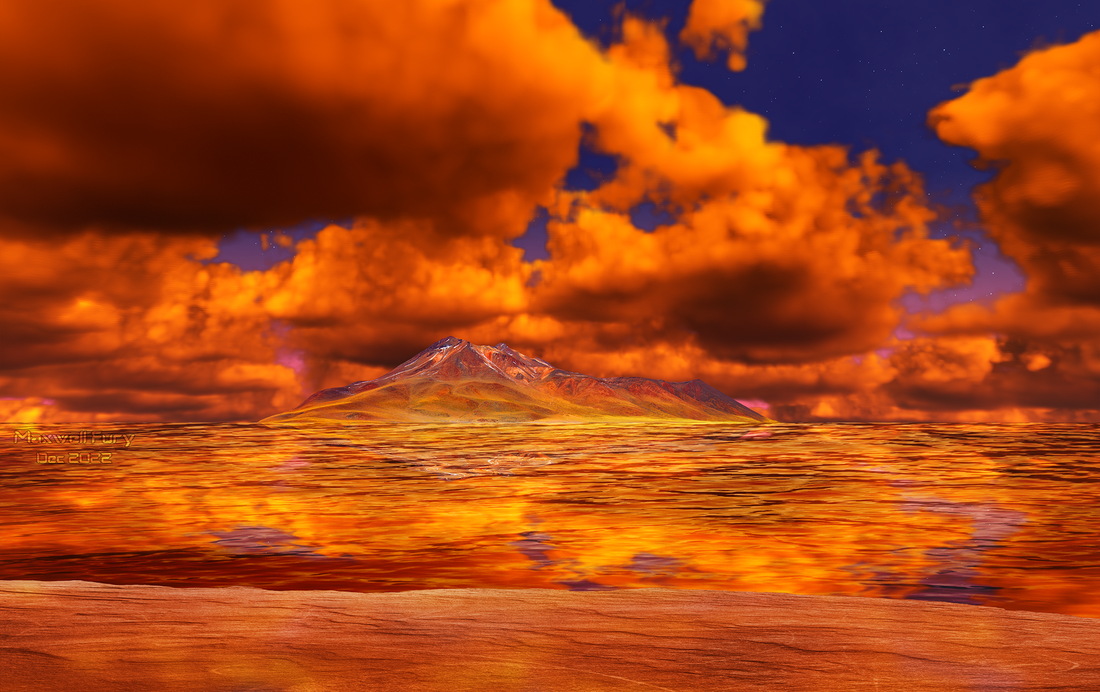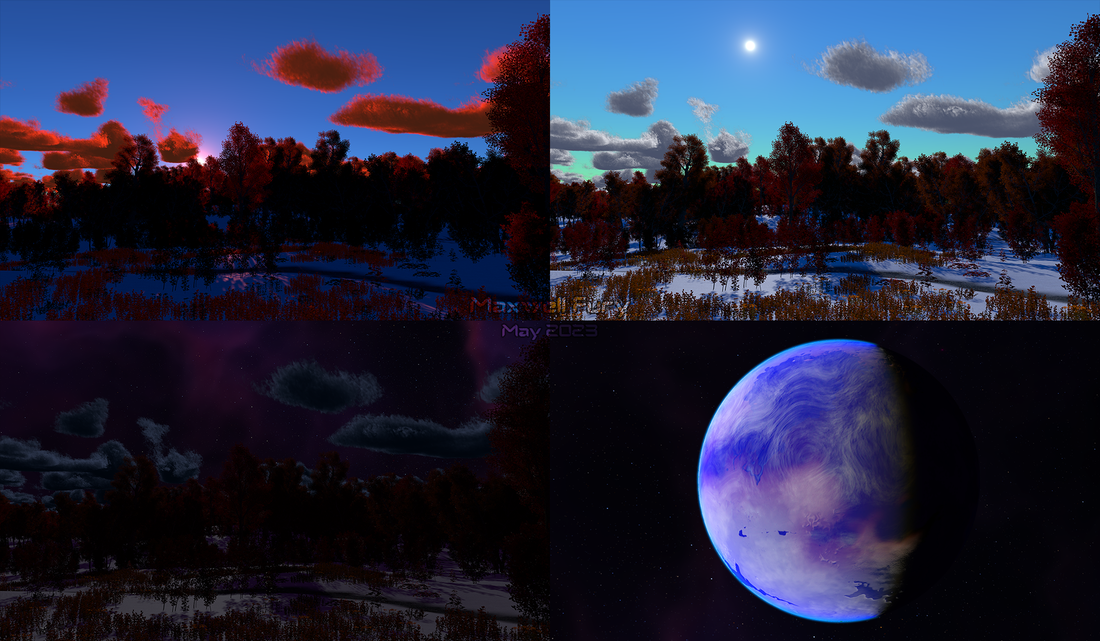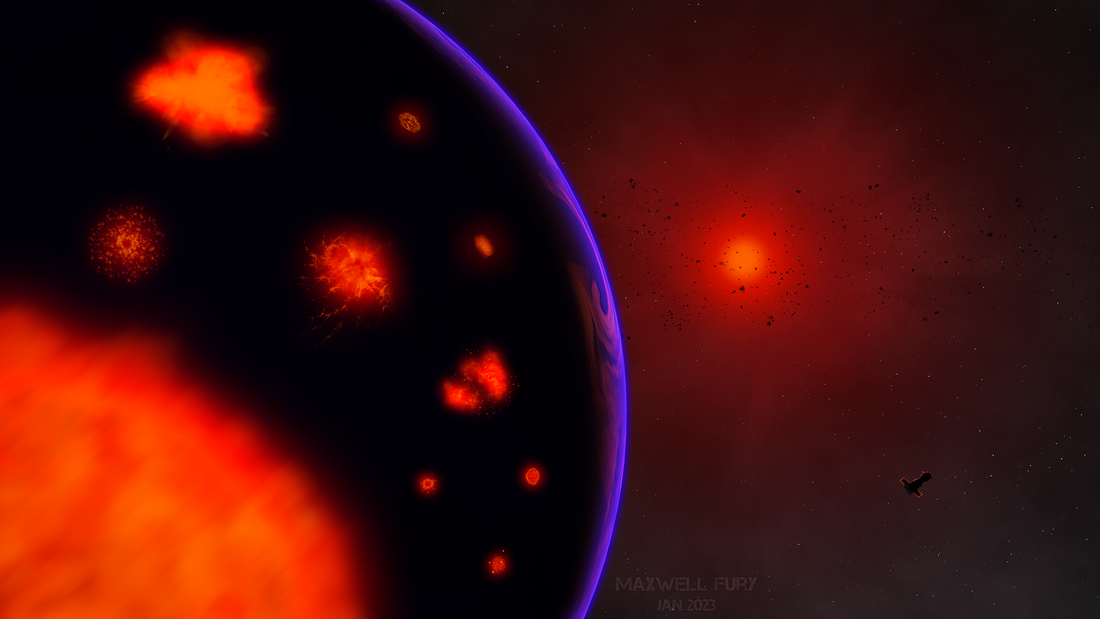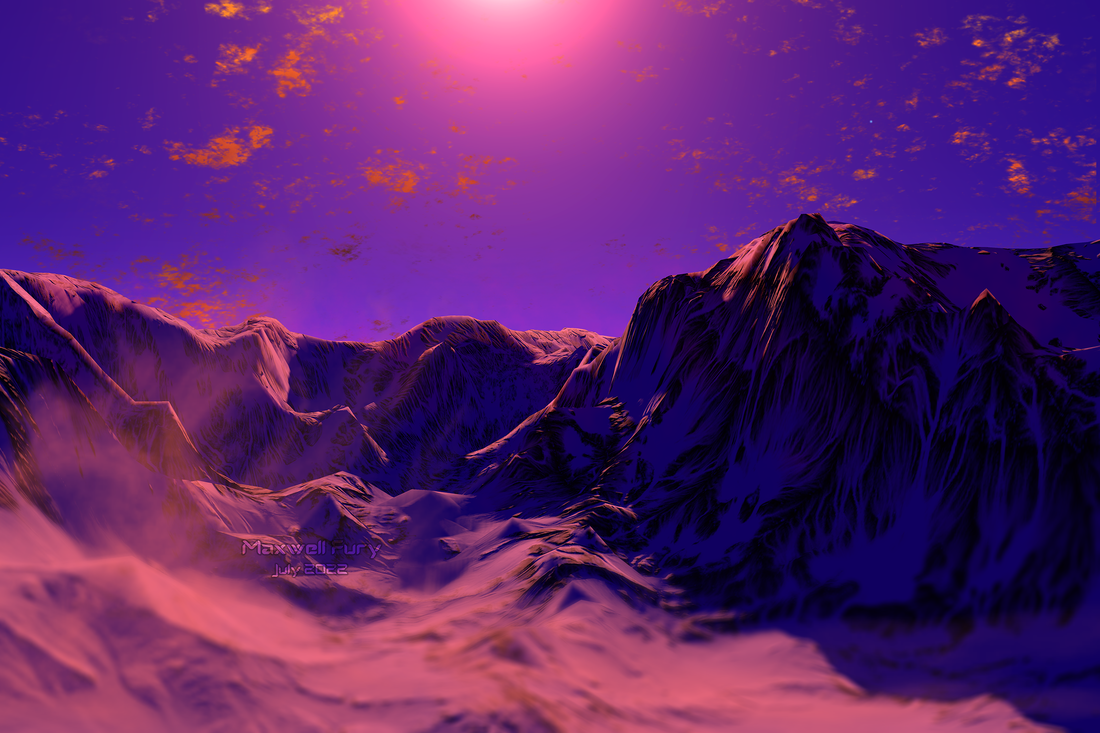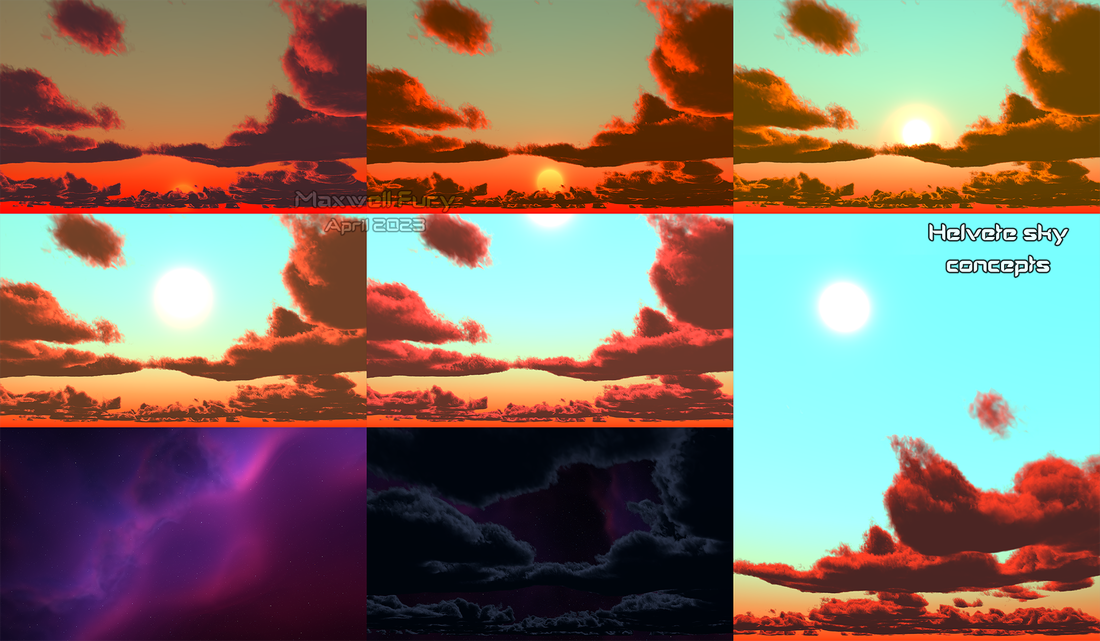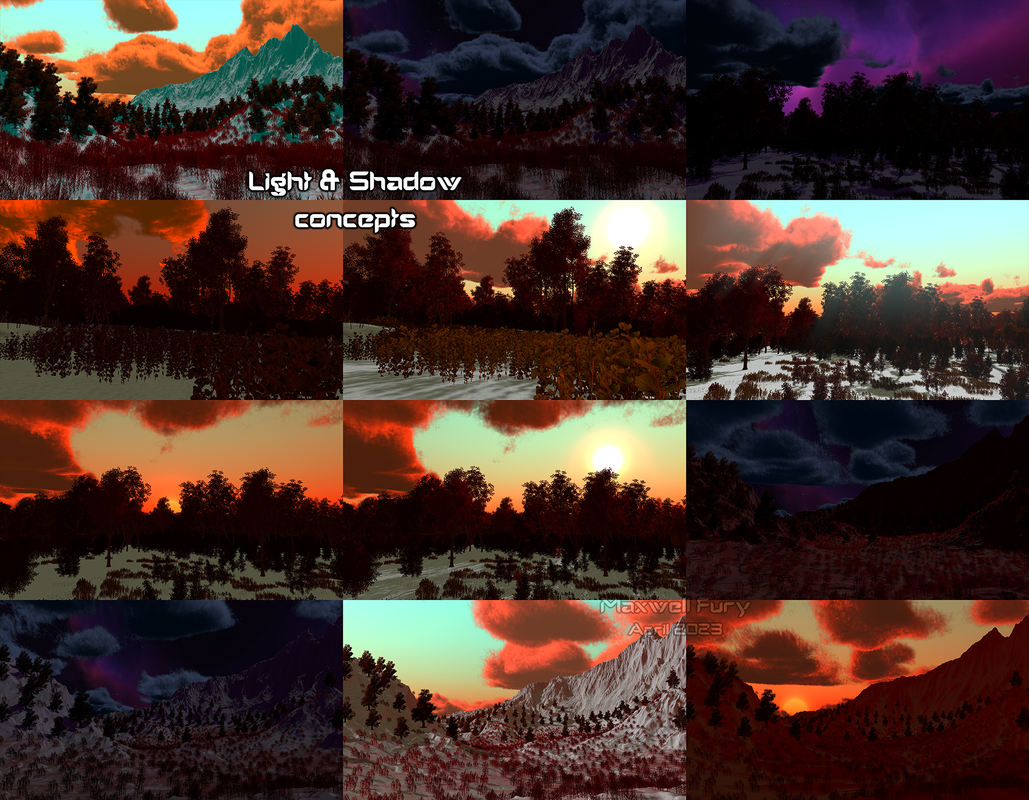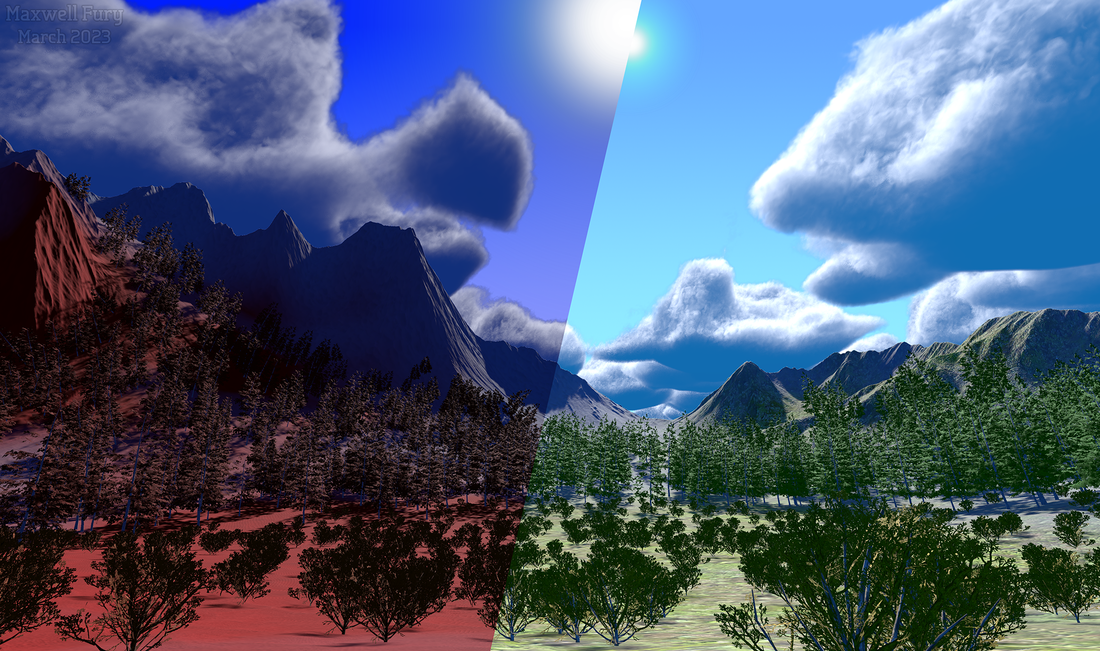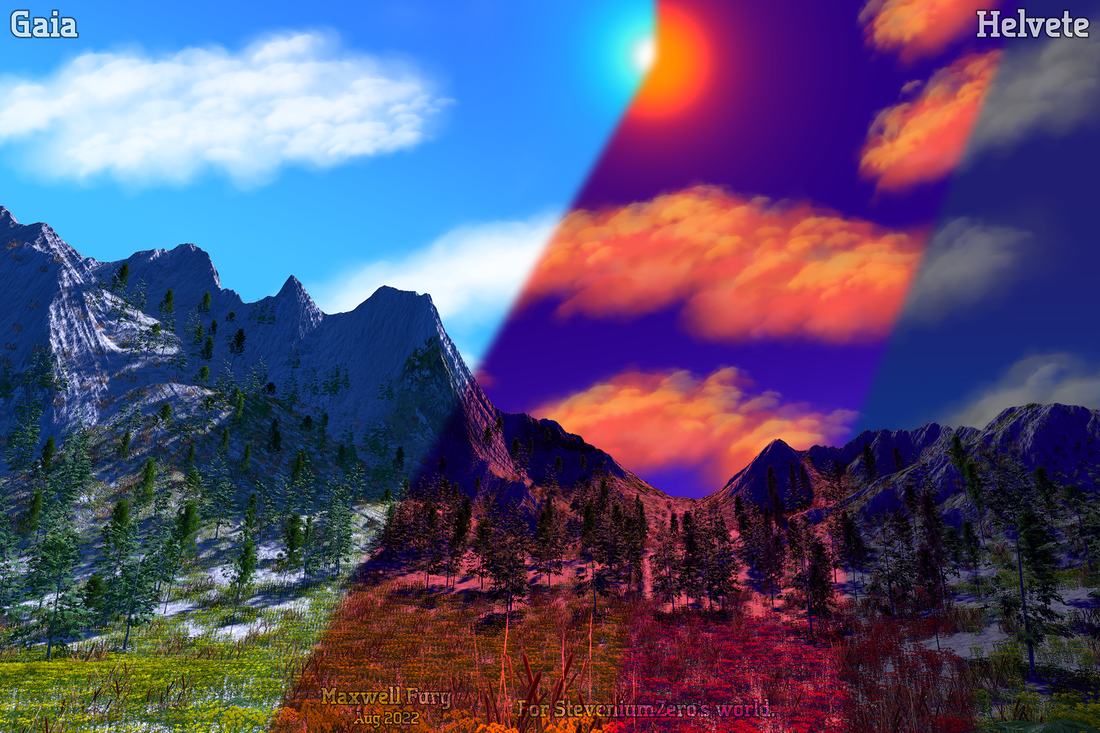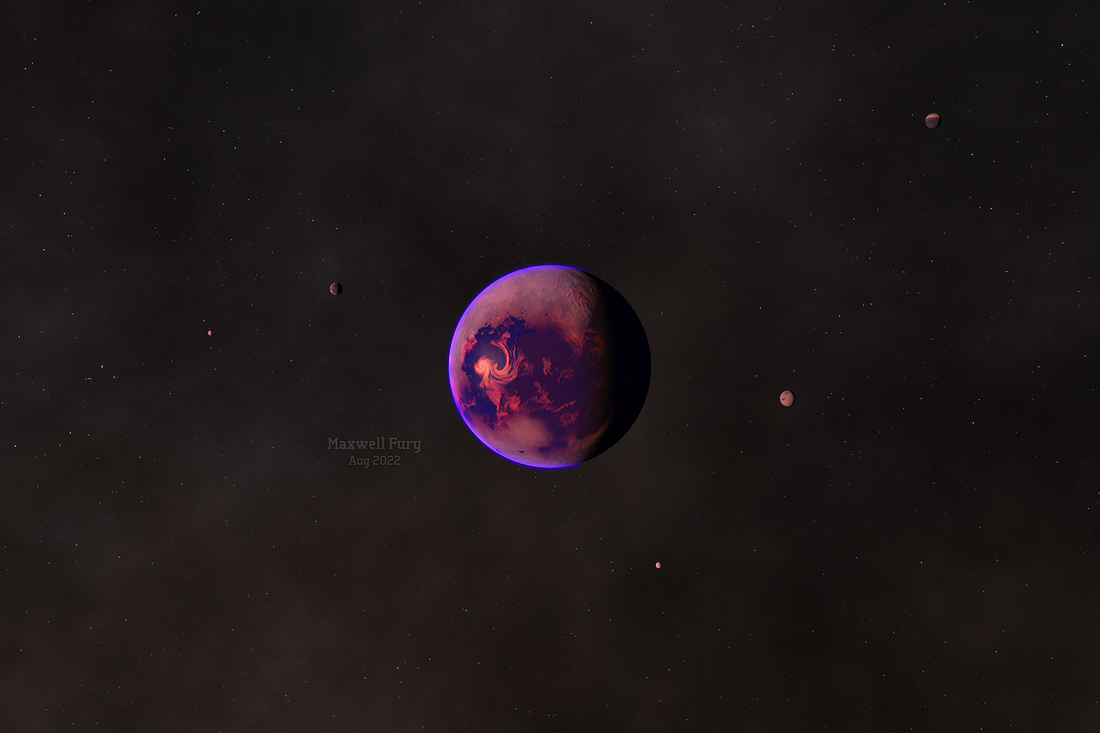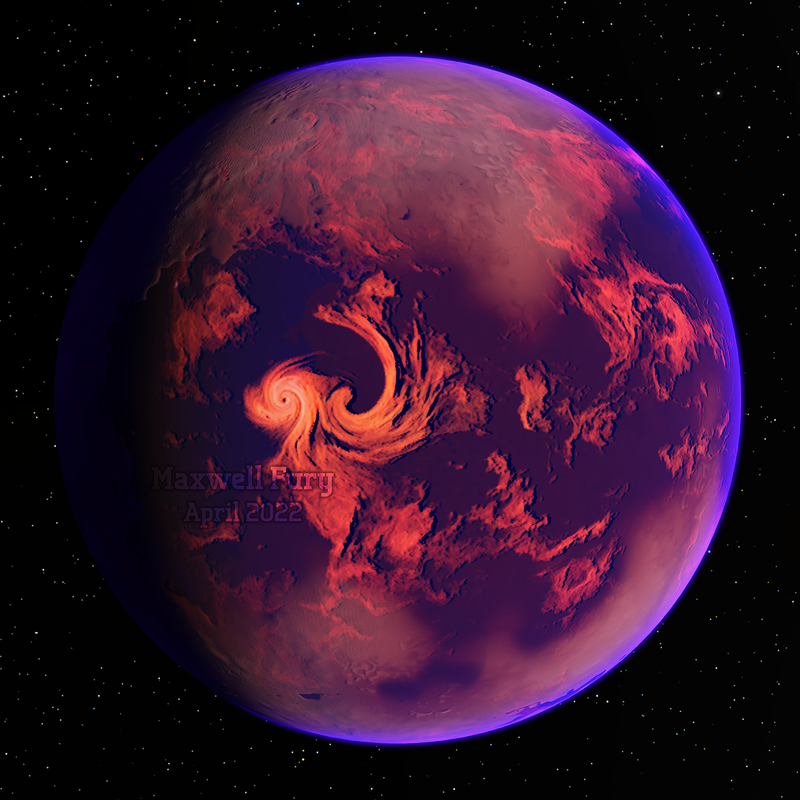HelveteWith a global average temperature of -70° celsius on Helvete, the maximum at the equator during the day is around -30 and the minimum at night is around -110. At the poles, the maximum during the day is around -60 and the minimum at night is around -130. However, temperatures in the Red Zone goes from -40 to 10 on any given day due to the thermal and volcanic activity underground.
The 35° tilt angle of the planet causes significant seasonal variations, strong winds that would carry for long distance and form dune-like features, and other intense weather. The planet's atmosphere also contains traces of methane, carbon dioxide, and nitrogen, which can affect the weather and climate in complex ways. Helvete is losing its atmosphere faster than Earth due to its Mars-like size and weaker gravity. The planet doesn't have a strong enough magnetic field to protect it from solar wind and other factors that could strip away its gases. To retain an atmosphere, Helvete would need to have a mass and radius similar to Earth. For now, the planet is at a stage where it can support its lifeforms under a thinning atmosphere. It would take millions of years for it to disappear entirely. It's unlikely for its M-type sun's radiation to cause sudden warming event. Compared to a G-type stars like our own, M-type stars can emit up to 1000 times more X-ray radiation and up to 100 times more ultraviolet radiation. The increased ultraviolet radiation lead to increased rates of photochemical reactions in the atmosphere, leading to the formation of more ozone, but also other compounds that have negative effects on life as we know it. The increased X-ray radiation also lead to greater ionization of the atmosphere, which can affect communications systems and lead to an increase in electrical storms. Helvete has therefore many "dead zones" where modern communication is impossible. Helvete is 1.2 times larger than Mars. Diameter of 8134.8 km.
The clock is set for the city of Inslejar. |


